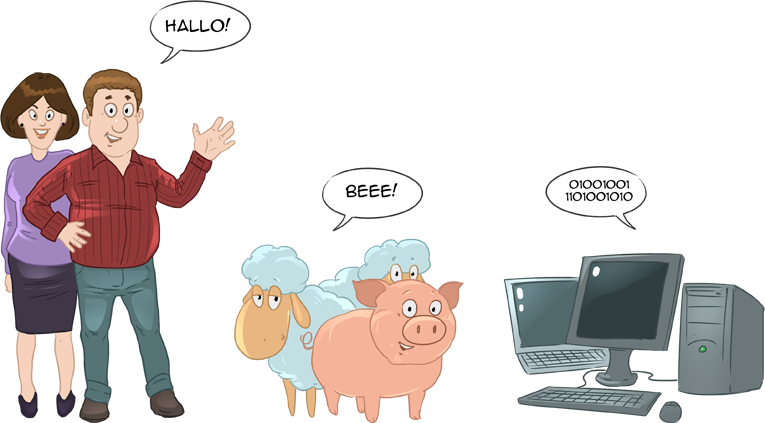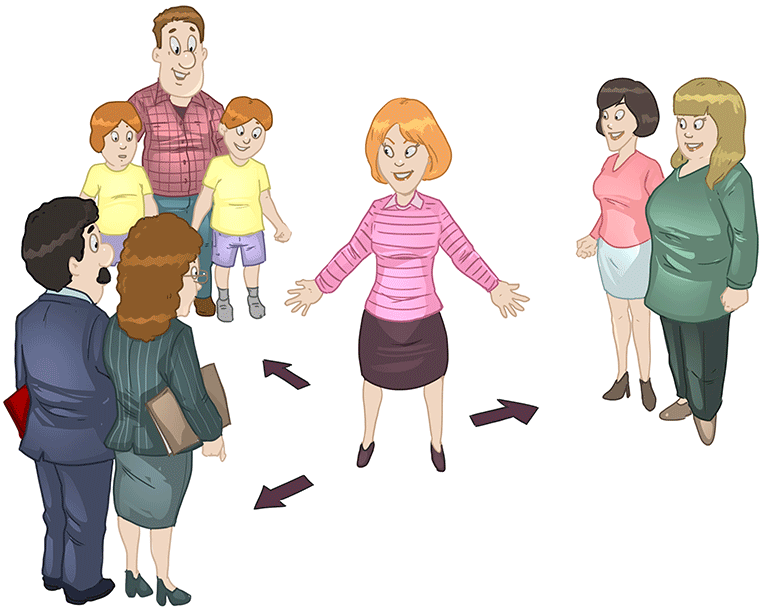Language and identity
"When you speak, I know where you belong."
"When you speak, I know where you belong."
Man is a social being. He or she is linked to other people through an emotional connection, sometimes seen as a form of friendship, affection or love. A group consists of at least two people. The first group to which a person belongs from birth is the baby and mother group. Then a person belongs to more and more groups, at first smaller and then larger.
F. de Saussure defined language structurally as a system of signs used for communication. The signs are arbitrary (made up) and language is a social phenomenon. Language has two basic functions: communication and identity. We will deal with the communicative and linguistic aspects in other chapters. Here we will consider the identity function.
The main requirement of a group is to find a way to distinguish members from non-members. Group members learn a language within the group and only those who belong to the group can use it to a high degree of competence. Therefore language is the principal factor through which people can distinguish whether a stranger belongs to their group or not, and in most cases also to which other group that person belongs.

Languages can be divided into human and non-human (animal, machine ...) languages. Human languages are those used by humans for communication. All human languages are both natural and artificial. Artificial because all human languages use arbitrary (artificial) signs – words - and because they are manmade. They are all natural due to their deep grammatical structure. The fact that every human language is capable of being learned by any human being proves that they are all natural.
Languages such as Esperanto, pidgins and creoles are normal human languages in the same way as are ethnic languages, dialects and other forms of speech. The basic requirement for any linguistic system to be a human language is that it be in regular use by a community.
Human beings created writing, and then states, and the states established state languages which differ from other spontaneous languages by being standardized. Standard languages are regulated by spelling and pronunciation models, grammar and dictionaries, and they are written. Therefore, changes in such languages are slower than in spontaneous language.

Each person belongs simultaneously to many groups (family, city, region, nation, religion, philosophy, groups of friends, etc.). And each group tends to develop variations of language which demarcate it from other groups. Therefore, each speaker in practice speaks many language varieties, or registers, even if not aware of this. Humans are multilingual by nature.
Each language also tends towards more extensive use than within its own group and each tends towards some use by neighboring groups to facilitate communication. In this sense, some languages continue to grow due to the general strength of their speakers (economic, military, etc.), and the strength and attractiveness of their cultures (cultural products include art, education, religion, entertainment industries ...) and become international languages which are more or less widely used.
The strongest languages tend towards the most extensive international use. Thus, there are several international languages. Despite the apparent dominant position of English, many people throughout the world do not speak it. Russian has a continued international role in the former Soviet Union, Spanish throughout Latin America (except Brazil), French in the many countries of la francophonie, Chinese in a vast region around China, and various diaspora international languages are in use among people without a particular territory, such as Roma and Sinti, Hebrew before the creation of Israel, Esperanto etc.
States that are formed through the unification of several ethnic groups or nations need a neutral new language to express their overall identity, such as Bahasa Indonesia. If it imposes the language of the most influential ethnic group for this purpose, the state tends to be short-lived (e.g. the former Soviet Union, Yugoslavia, etc.) or it survives but with long-term instability.